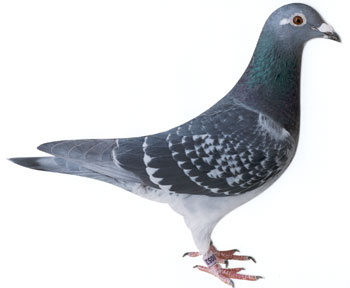

Line ID:@dna0910906989

Avian Polyoma Virus (APV Virus)
Caused by the APV virus, the disease first discovered in the early 1980s, the budgie (Budgerigar), the infected budgie, had no feathers on the abdomen and back,
so the disease was also known as the budgie off-feather (Budgerigar). Fledgling disease, BFD). Later, the virus was found in macaws , Conure,
eclectic parrots,ringneck, Caique, lovebirds, lory, Amazon parrots, grey parrots, hawk-headed Parrot, and Cockatoo.
APV virus introduction
The non-enveloped icosahedral symmetrical virus, circular double-stranded DNA, is classified into Polyomavirus, Polyomaviridae.
Infection mode
APV is a highly contagious disease, and the virus can be isolated from the blood of the bird, the plump feces, and the secretion of the sac. Among them,
feather dust is the most important source of distribution, so if there is an infected person in the breeding environment, it is easy to spread through the feathers.
Because the immune system of young birds is relatively imperfect, they are susceptible to infection. Most birds over the age of three can have strong immunity without getting sick.
Symptoms of APV
Typical initial symptoms are anorexia, depression, feather shedding, etc., which are extremely harmful to the young birds within 15 days. However,
clinical symptoms will vary depending on the species and age.
Acute and subacute infections are prone to young birds aged 3-6 weeks. Most of the sick birds are violent without any clinical symptoms,
and the mortality of budgies within 15 days of age can be as high as 30-100%. Young birds 5-16 weeks old may have clinical symptoms such as anorexia, depression, diarrhea, polyuria,
lower body paralysis, prolonged emptying of the hernia sac, vomiting, subcutaneous hemorrhage, and then die.
Most of the symptoms of 16-21 weeks old sick birds may be accompanied by symptoms such as feather atrophy in addition to the aforementioned symptoms.
The parrot species that are more commonly infected with this disease include Budgerigar, macaws, eclectic, Conure, ringneck, etc., while African grey parrots, Cockatoo,
hawk-headed Parrot and Amazon parrots have fewer cases.
Chronic infections in birds over 6 months of age, at which time the birds have relatively strong immunity, sometimes infected with the virus, and there are no symptoms,
and the mortality rate is low. Chronic infections may result in weight loss, good or bad appetite, and occasional vomiting.
Some adult birds with the original may also die without warning, but such cases rarely occur.
The incubation period and time of onset of the virus infection have not been determined, but in the case of budgies, the 15-19 days after infection is the peak of the disease,
and the young birds of other large parrots may die 20-140 days after the infection. The average onset to death occurs mostly in 20-56 days.
Prevention method
Before introducing new birds, it is best to perform molecular biological PCR blood screening. In addition, helping birds build strong immunity is also a way to protect birds from viruses.
Treatment
There is currently no effective treatment and only supportive treatment for infected birds.
Diagnosis method
Immunofluorescent antibody staining, Virus Neutralization, in situ hybridization, Electron Microscopy, and PCR test. Molecular biological PCR test is currently the most sensitive
and specific diagnostic method. Studies have shown that APV virus can be detected in the blood of the bird's latent infection period, which is far more sensitive,
faster and more accurate than other tests.
Type of specimen (use of blood specimens is better, because the blood can be found earlier, the virus will move to the feathers as the blood transports nutrients,
and the virus can be detected in the blood after a few days of infection)
1. Feather specimen: Take 3-5 feathers from the chest, abdomen or back of the bird and put them in a transparent plastic bag.
[Feathers must be taken from the birds, non-birds naturally falling feathers or falling off the baby's hair]
2. Blood sample: Use 75% alcohol to disinfect the scissors and the nails you want to sample. After the nails are disinfected, use the disinfected scissors and slowly cut them.
Until you can see the blood, you can take 1-2 drops of blood with white paper. After the blood is naturally dry, put it in a transparent plastic bag.
[The paper needs to be larger than 1*1 cm, and it is better to choose paper or water-absorbing paper that is not easy to break.]
※ Please refer to the sampling process for detailed
inspection methods.
If you have any other questions about our services, please contact us with e-mail(E-Mail:parrotsexing886@gmail.com, E-Mail:parrotsexing@hotmail.com).

